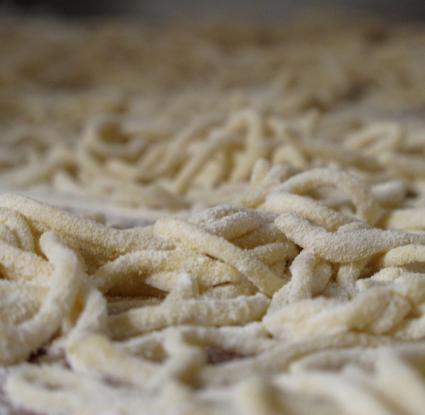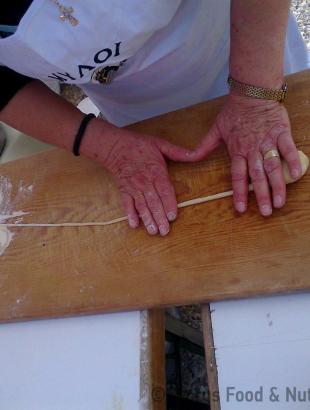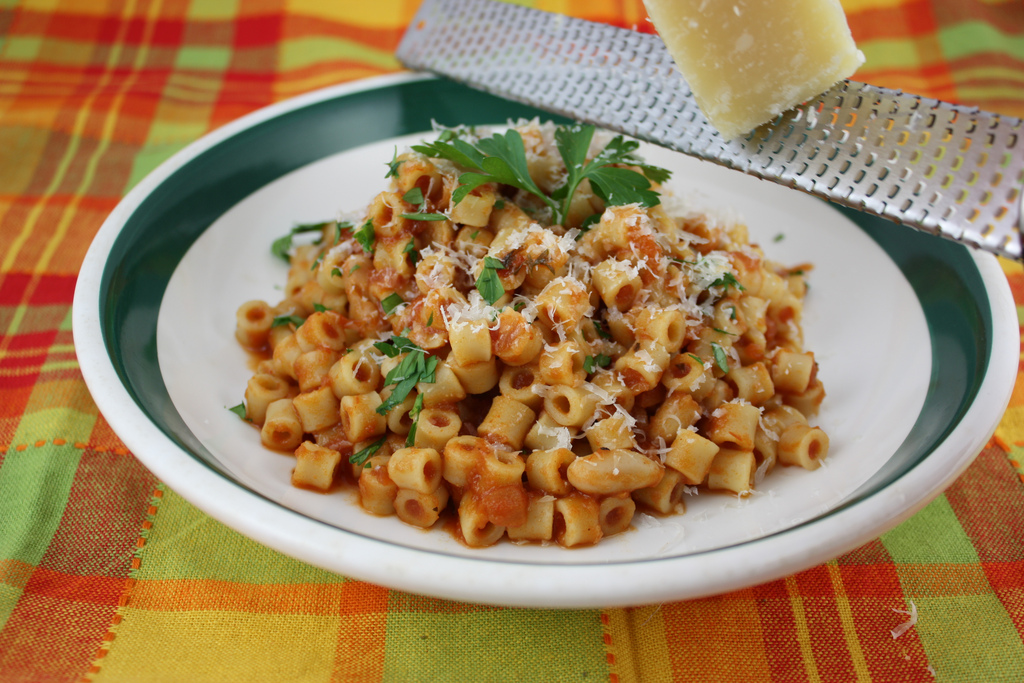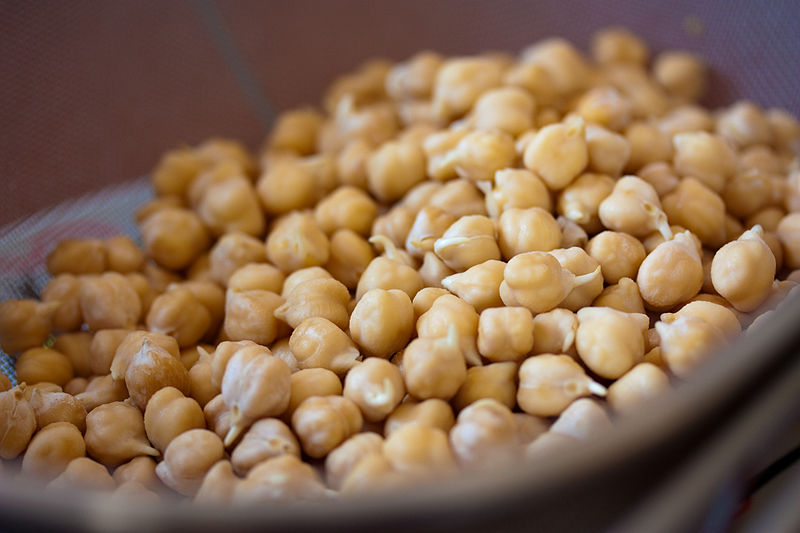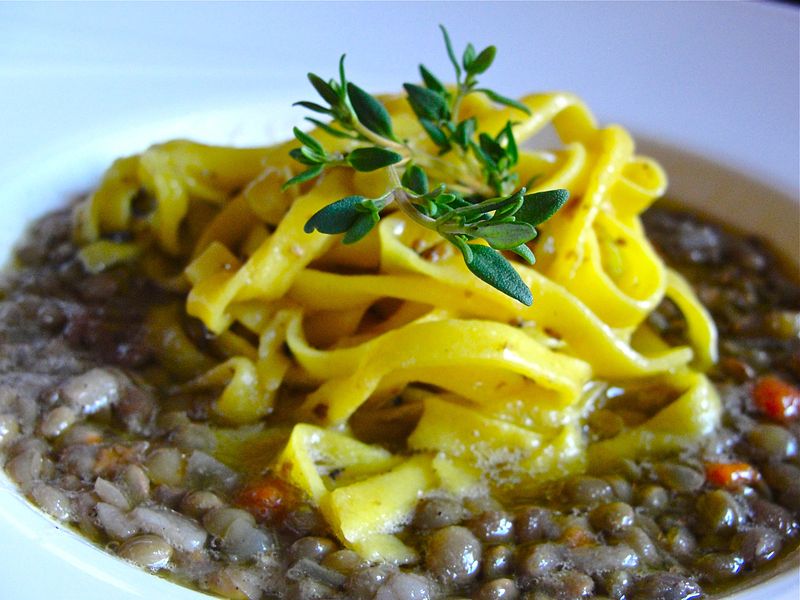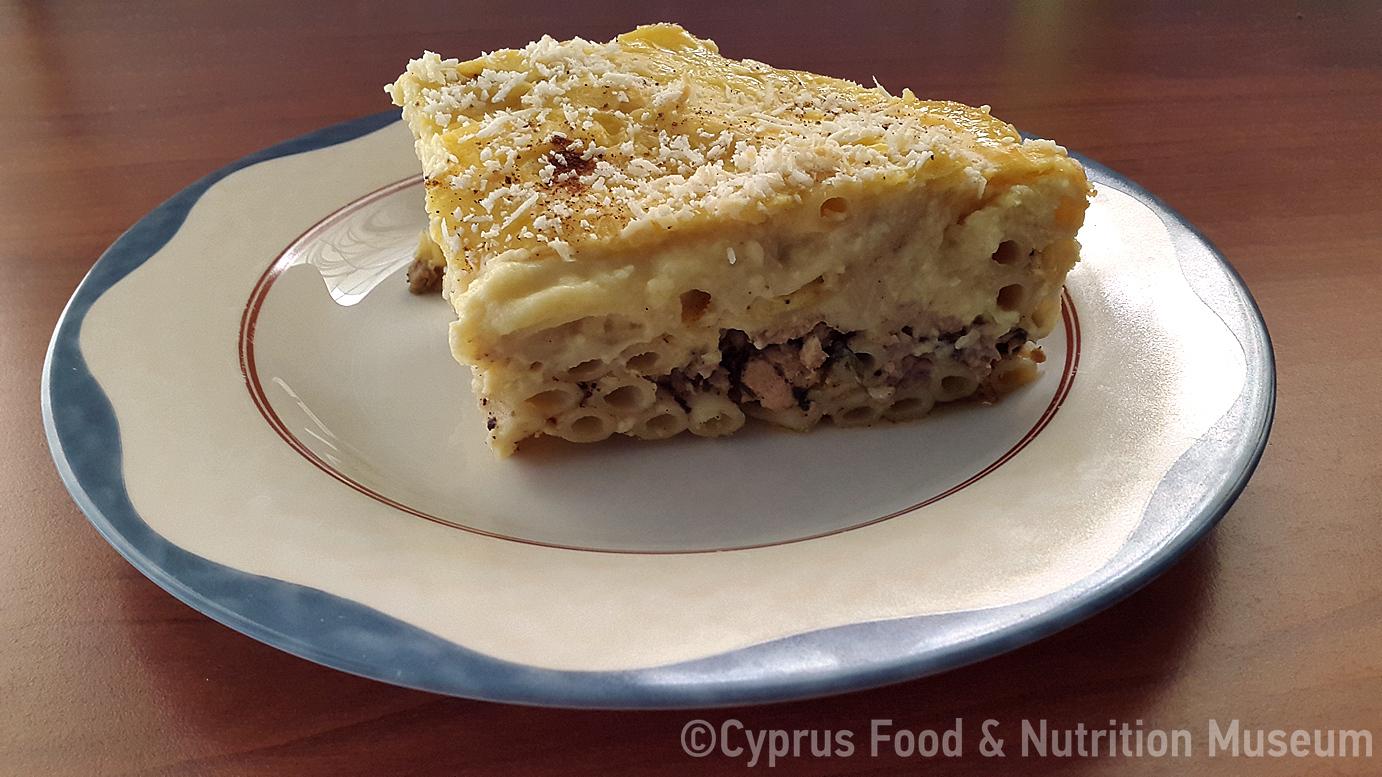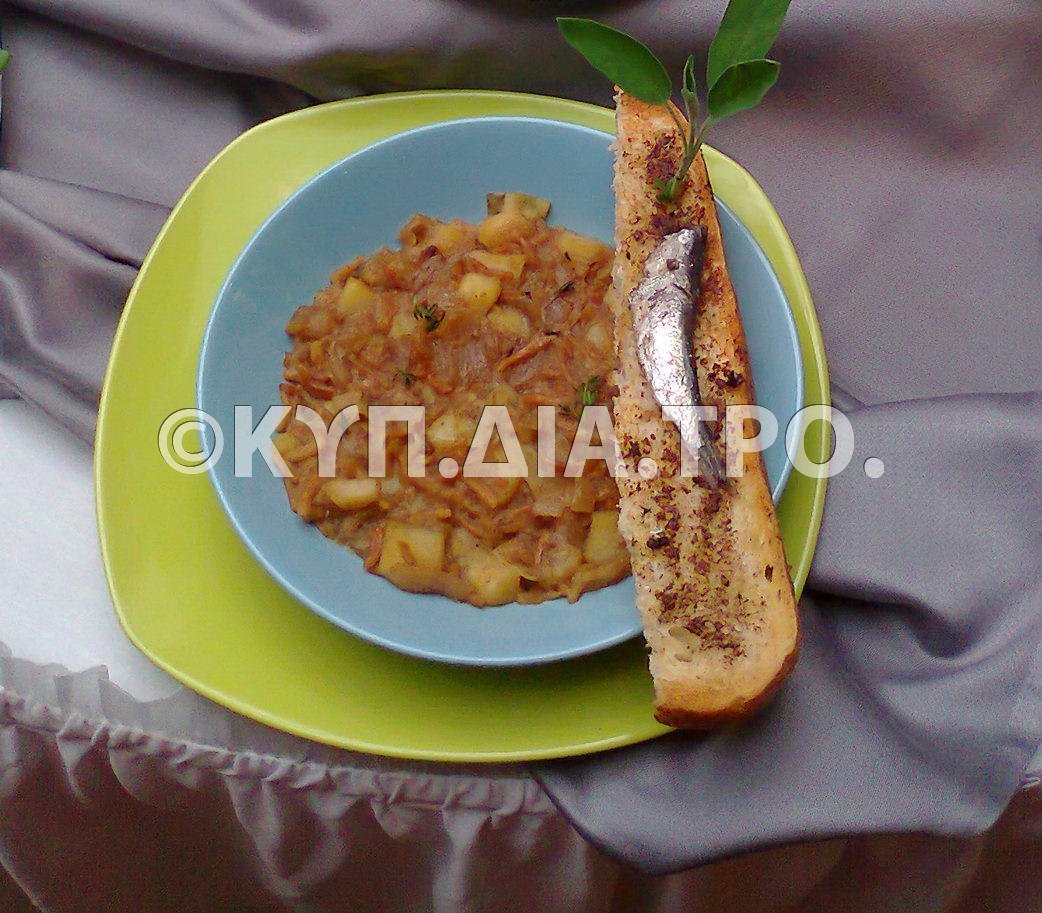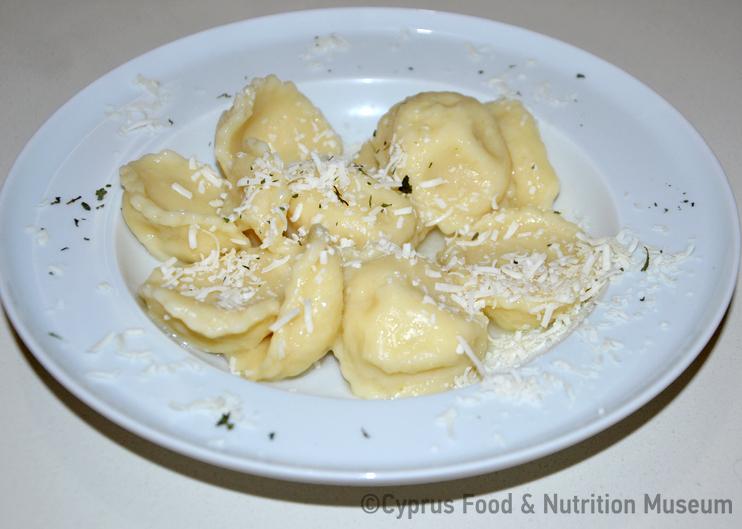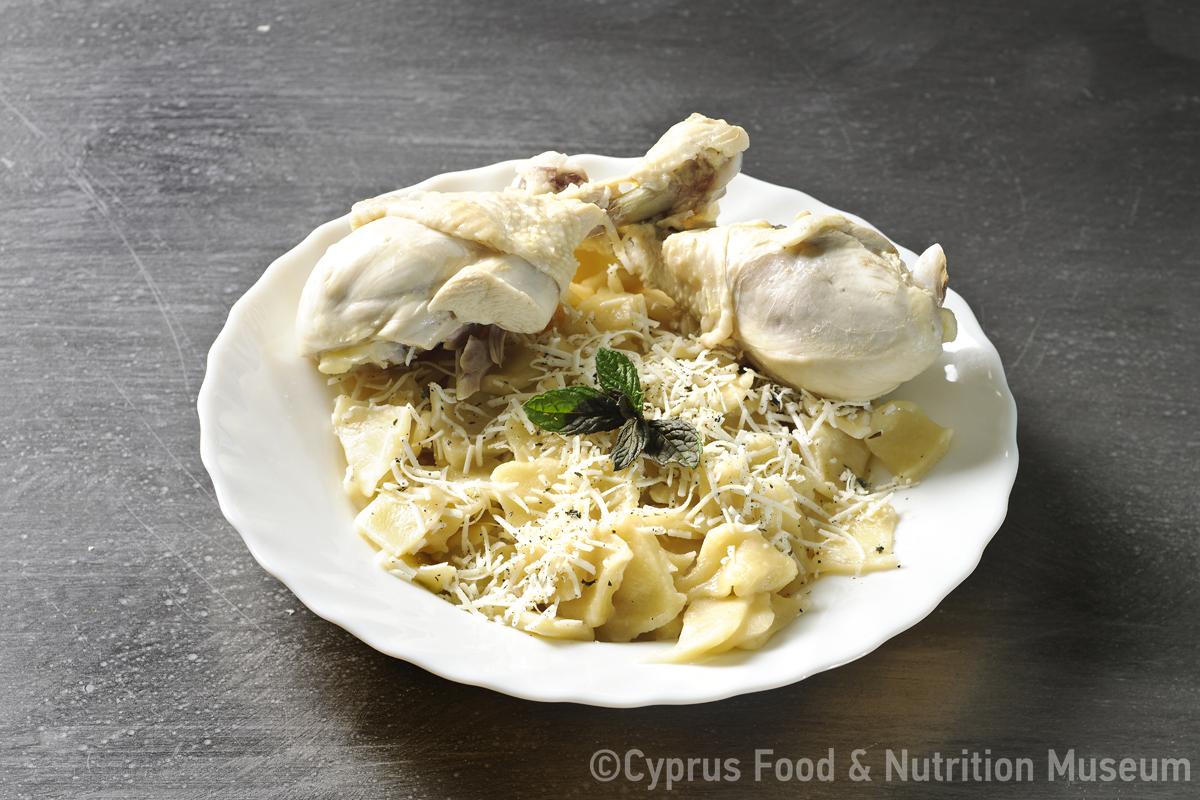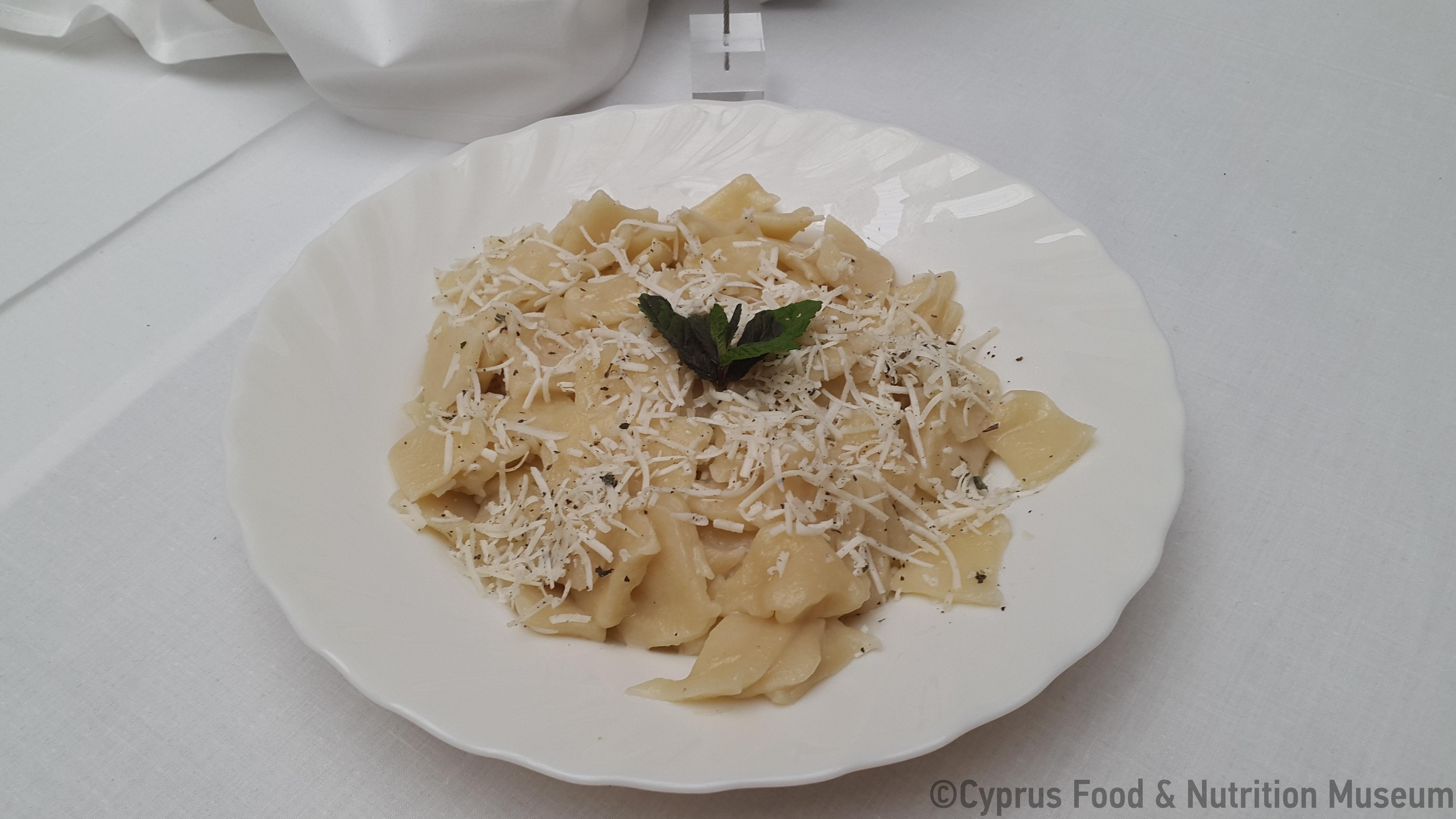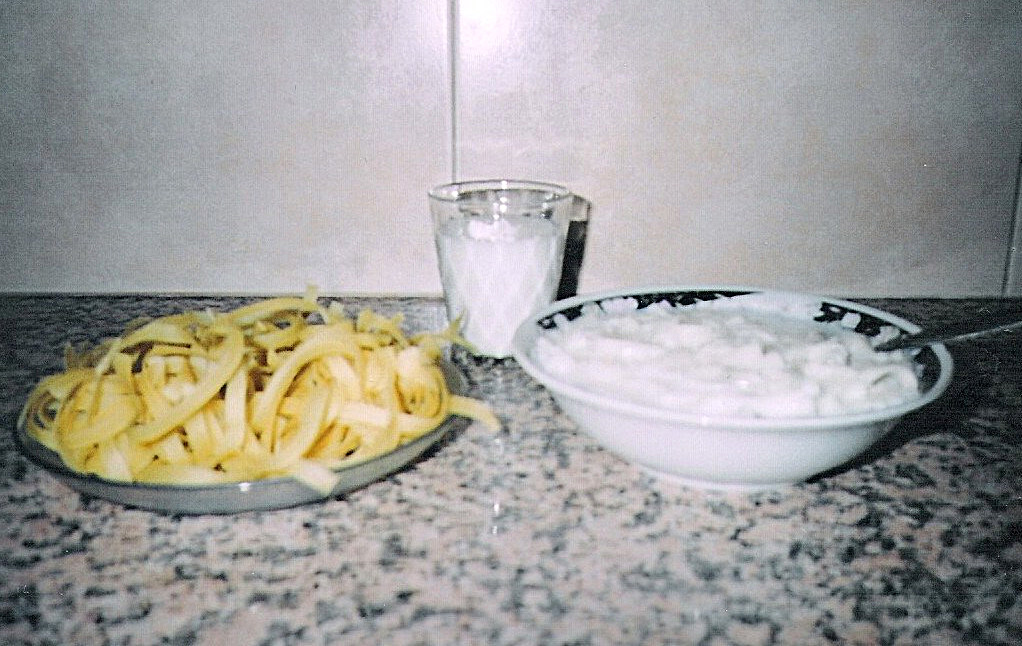"Take a little bit of dough and shape it by hand until it is thin. Cut it into small pieces' (Athina Kamintzi, Kyperounda).
Name - Recipe
Φιδές φτιαγμένος στο χέρι. Vermicelli was made thin and short with no hole (Kyprianou 1992, 69).
1 kg of flour
1 cup of olive oil
½ teaspoon salt
boiling water for kneading (as much as needed)
Make a dough and let it proof for half an hour. Take a little bit of dough and shape it by hand until it is thin. Cut it into small pieces. Let them dry for about 4-7 days. (Athena Kamintzi, Kyperounda).
Boiling.
The fides (vermicelli) was boiled in chicken broth and served with trimman (grated halloumi cheese). However, it could be roasted in the oven or in the pot and cooked as a pilaf on its own or mixed with bulgur (Kyprianou 1992, 69).
Functional and symbolic role
Fides was customary at weddings. On the Sunday before the wedding, the women would visit the bride's house and make it and other pasta (Kyprianou 1992, 69-70).
Additional information and bibliography
Panagiota Chr. Kyprianou, in writing about her community of Palaikythro, notes that during holidays or Sundays, friends and neighbours would gather at a house and help the landlady cut the fides, as it took a lot of work. She would reciprocate and help them on a different holiday or Sunday. Thus, during Summer, on holidays or on Sundays the alleys were filled with girls and old women who were cutting fides and laying it in the sun to dry (Kyprianou 1992, 70).
Oral testimony: Athena Kamintzi, 45 years old, Kyperounda - Limassol, in Kourri and Lazarou 2007, unpublished data.
Kyprianou P. Chr. (1992), 'Folklore of Palaikythro', Λαογραφική Κύπρος 42 (annex), 1-101.
Stalo Lazarou, Argyro Xenophontos

